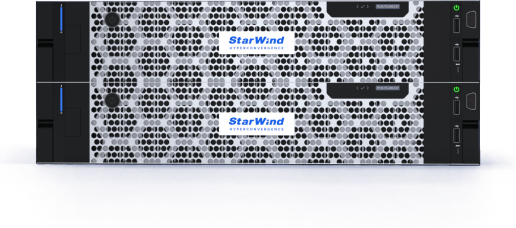Introduction: Why Convert Physical Servers to Virtual (and Cloud)
Virtualization remains a cornerstone in modern IT infrastructure. Engineers often need to convert physical servers into virtual machines (VMs) for various reasons, including cost savings, improved manageability, and scalability. Consider a scenario involving several aging Windows Server 2016 physical servers, including a domain controller, that require virtualization and eventual migration to the cloud. The advantages of virtualizing such servers encompass:
- Cost Efficiency: Reduces hardware and maintenance expenses.
- Simplified Management: Easier backups, snapshots, and resource allocation.
- Scalability: Quickly adjust resources to meet changing demands.
- Cloud Integration: Facilitates access to services like Azure and AWS.
However, challenges arise due to varying VM formats across platforms and the complexities of migrating UEFI-based systems.
Microsoft Disk2VHD: Quick and Lightweight P2V for Hyper-V
Microsoft Disk2VHD is a free utility from Sysinternals that creates VHD or VHDX images of physical disks for use with Hyper-V.
Key Features
- Volume Snapshot Support: Utilizes Windows’ Volume Shadow Copy Service to create consistent snapshots of volumes.
- Format Options: Supports both VHD and VHDX formats.
- Portability: No installation required; runs as a standalone executable.
- Selective Volume Conversion: Allows selection of specific volumes for conversion.
Limitations
- UEFI Support: Limited support; may require manual intervention to fix boot issues in UEFI-based systems.
- BitLocker: Does not support conversion of BitLocker-encrypted volumes; decryption is necessary prior to conversion.
- Manual VM Setup: Post-conversion, users must manually create and configure the VM in Hyper-V.
- No Live Migration: Cannot perform live migrations; the system must be offline or quiesced.
Disk2VHD is suitable for simple P2V tasks, especially in lab environments or for quick backups. However, for more complex migrations, especially involving UEFI systems or requiring automation, other tools may be more appropriate.
Azure Migrate: Microsoft’s Cloud-Native Approach
Azure Migrate has evolved to support a broad range of migration scenarios, including:
- Physical Servers: Supports Windows Server versions up to 2025 and various Linux distributions.
- Virtual Machines: Handles VMs from platforms like VMware, Hyper-V, AWS, and GCP.
- UEFI Support: Migrates UEFI-based machines to Azure Generation 2 VMs without requiring BIOS conversion.
Migration Process Overview
- Set Up Azure Migrate Project: Initiate a migration project in the Azure portal.
- Deploy Replication Appliance: Install the appliance on-premises to facilitate discovery and replication.
- Install Mobility Service: Deploy the agent on source machines to enable data replication.
- Enable Replication: Begin continuous data replication to Azure.
- Test Migration: Validate the migration process without affecting the source machine.
- Perform Full Migration: Complete the migration and decommission the source server if desired.
Azure Migrate offers both agentless and agent-based migration options, providing flexibility based on the source environment and specific requirements.
VMware vCenter Converter Standalone: Still in the Game
After a long pause, VMware’s vCenter Converter made a comeback. The latest version—v6.6, released in February 2024—adds support for newer OSs and UEFI-based machines, and it now accepts KVM/Nutanix sources.
What’s New in v6.6
- Windows Server 2022 and Ubuntu 22.04 support
- UEFI firmware handling
- Support for Nutanix AHV and Red Hat RHV as sources
- Improved GUI and backend stability
Ideal Use Case
- P2V or V2V into vSphere/ESXi
- Simple interface, and now supports UEFI-based source machines
Cloud-to-On-Prem?
Partially. VMware Converter can’t connect directly to public cloud platforms (e.g., Azure, AWS), but if you manually export a VM from the cloud as a VHD/VMDK, you can use Converter to import and reconfigure it into ESXi. So while it’s not a direct cloud pull, it helps re-virtualize a downloaded cloud VM for vSphere use.
StarWind V2V Converter: Lightweight, Cross-Compatible, and Flexible
StarWind V2V Converter is free, doesn’t require any host agent, and supports converting between VHD/VHDX, VMDK, QCOW2, RAW, and more. And unlike most tools, it works both directions — to the cloud and from the cloud.
What It Does (P2V, V2V, V2C, C2V)
- Convert physical machines to all major hypervisor formats
- Convert between VMs (e.g., Hyper-V ⇄ ESXi ⇄ KVM)
- Direct export to and import from Azure or AWS
- Handles UEFI and BIOS boot schemes seamlessly
- Minimal installation or prep needed
Cloud-to-On-Prem Support?
Yes. StarWind V2V Converter can connect directly to Azure and download VM disks, converting them into local Hyper-V, VMware, or QCOW2 images.
Example scenario:
- You have a Gen2 VM running in Azure.
- You use StarWind V2V to log in to your Azure subscription.
- Select the VM or VHD blob.
- Convert it to VHDX (Hyper-V), VMDK (VMware), or QCOW2 (KVM).
- Deploy the resulting VM locally.
No need for manual export scripts or blob copying — StarWind takes care of it through the UI.
Tool Comparison Snapshot
| Feature | Microsoft Disk2VHD | Azure Migrate | VMware Converter | StarWind V2V Converter |
|---|---|---|---|---|
| UEFI Support | Limited | Yes (Gen2) | Yes (v6.6+) | Yes (auto-handled) |
| Physical-to-Virtual (P2V) | Yes | Yes | Yes | Yes |
| Virtual-to-Cloud (V2C) | No | Azure only | No | Azure & AWS |
| Cloud-to-On-Prem (C2V) | No | No | Manual export only | Yes (direct conversion) |
| Converts to VHDX | Yes | No | No | Yes |
| Converts to VMDK | No | No | Yes | Yes |
| Converts to QCOW2 | No | No | No | Yes |
| Hypervisor-neutral | No | No | VMware only | Yes |
| Free to Use | Yes | Yes | Yes (Broadcom acct) | Yes |
Final Thoughts
In 2024, migrating workloads between physical, virtual, and cloud environments is more accessible than ever, thanks to a variety of tools tailored to different needs:
- Microsoft Disk2VHD: Ideal for quick, straightforward P2V conversions within Hyper-V environments, especially for BIOS-based systems.
- Azure Migrate: The go-to solution for seamless migrations to Azure, offering robust support for various scenarios, including UEFI-based systems.
- VMware vCenter Converter Standalone: A reliable choice for migrating to VMware environments, now updated to handle modern OS versions and UEFI firmware.
- StarWind V2V Converter: A versatile, free tool supporting a wide range of formats and scenarios, including direct cloud-to-on-prem migrations—a feature not commonly found in other converters.
Each tool has its strengths and is best suited to specific scenarios. Assess your organization’s needs, infrastructure, and target environments to choose the most appropriate solution.
Honorable Mentions
While the tools discussed above cover a broad spectrum of migration needs, here are a few additional converters worth considering:
- Veeam Backup & Replication: Primarily a backup solution, it also offers VM replication and migration capabilities, especially useful for environments already utilizing Veeam.
- OpenQRM: An open-source data center management platform supporting P2V, V2P, and V2V migrations, ideal for organizations seeking open-source solutions.
- AWS Server Migration Service (SMS): Facilitates the migration of on-premises workloads to AWS, offering automated, scheduled replications.
These tools cater to specific use cases and environments. Evaluate them based on your organization’s requirements and existing infrastructure.


